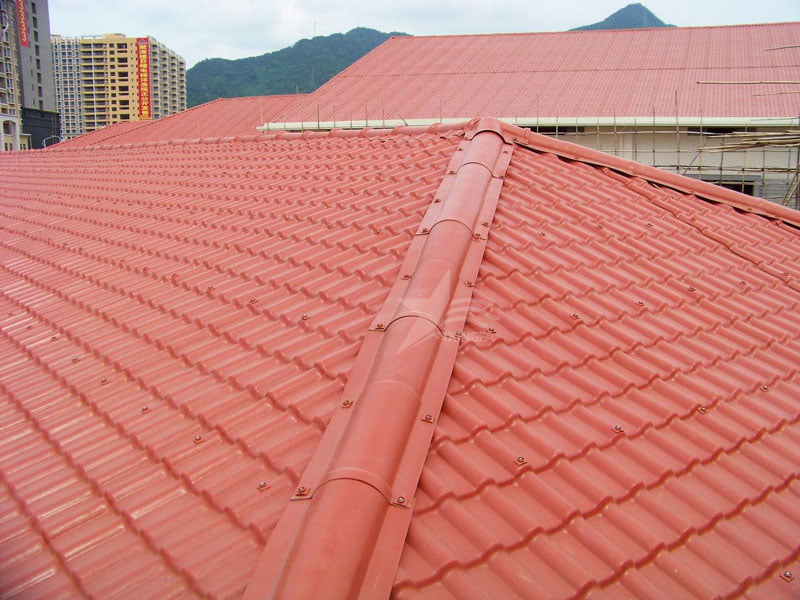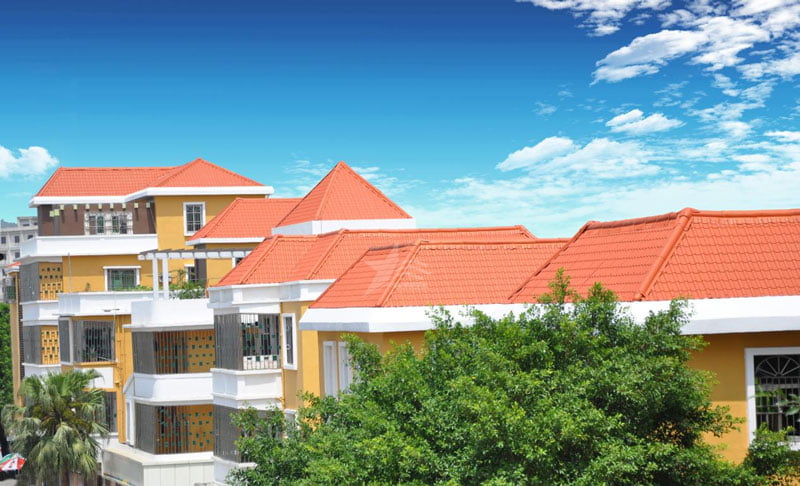PVC tiles, also known as plastic steel tiles, are alternative products to color steel tiles. Using multi-layer co-extrusion technology, an anti-aging layer is added to the surface and an abrasion-resistant layer is added to the bottom to improve the weather resistance of the product. Synthetic resin tiles are developed from high-quality PVC resin and imported ultra-weather-resistant engineering resin ASA, which are durable, corrosion-resistant, colorful, anti-aging, and have a skeleton layer in the middle, with good toughness and high rigidity.

The characteristics of PVC anti corrosive tiles are: 1. Relatively affordable price; 2. Non-flammable material, B1 fire safety performance; 3. Good chemical corrosion resistance, life is more than 3 times longer than color steel tiles; 4. Impact and tensile resistance; 6. Low noise, can reduce more than 30db than metal and roof panels; 7. Easy installation, time-saving and labor-saving; 8. Bright and colorful colors; 9. No asbestos components, no carcinogenic substances released. The disadvantage is that compared with traditional synthetic and resin tiles, the stability of PVC tiles to light and heat is slightly worse, and it is easy to fade when used outdoors, but in order to not affect its performance.

The characteristics of synthetic resin tiles are: all the characteristics of PVC anti corrosive tiles, better corrosion resistance than PVC anti corrosive tiles, more durable color, longer service life, and higher price.

The application of PVC anti corrosive tiles and synthetic resin tiles: 1. PVC anti corrosive tiles are suitable for enterprises to use for the roof and walls of production plants, with large span, which can save steel and reduce management costs. 2. Synthetic resin tiles are widely used in self-built houses, villas, antique buildings and other permanent building roof decorations, especially suitable for acid rain areas and coastal areas.

